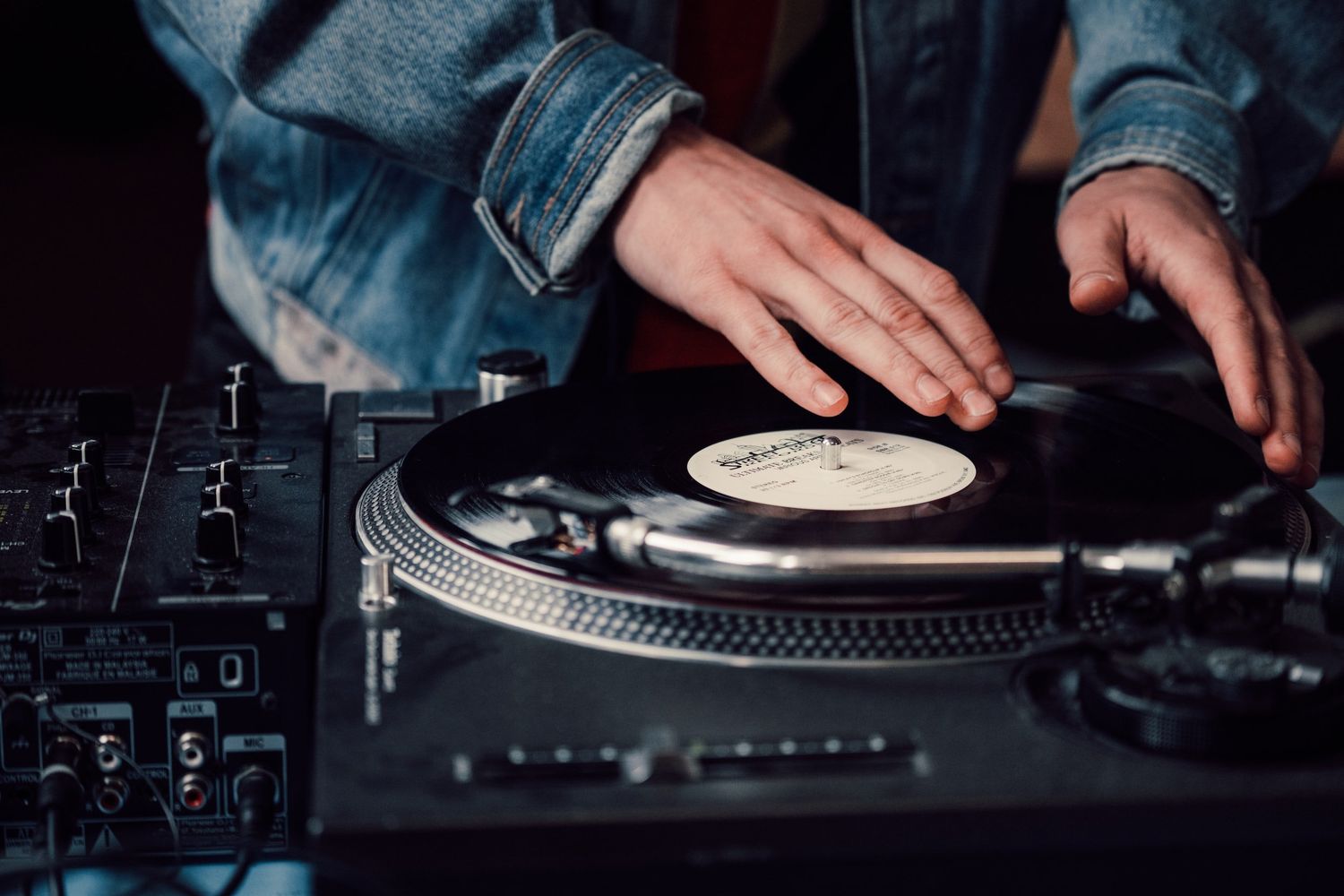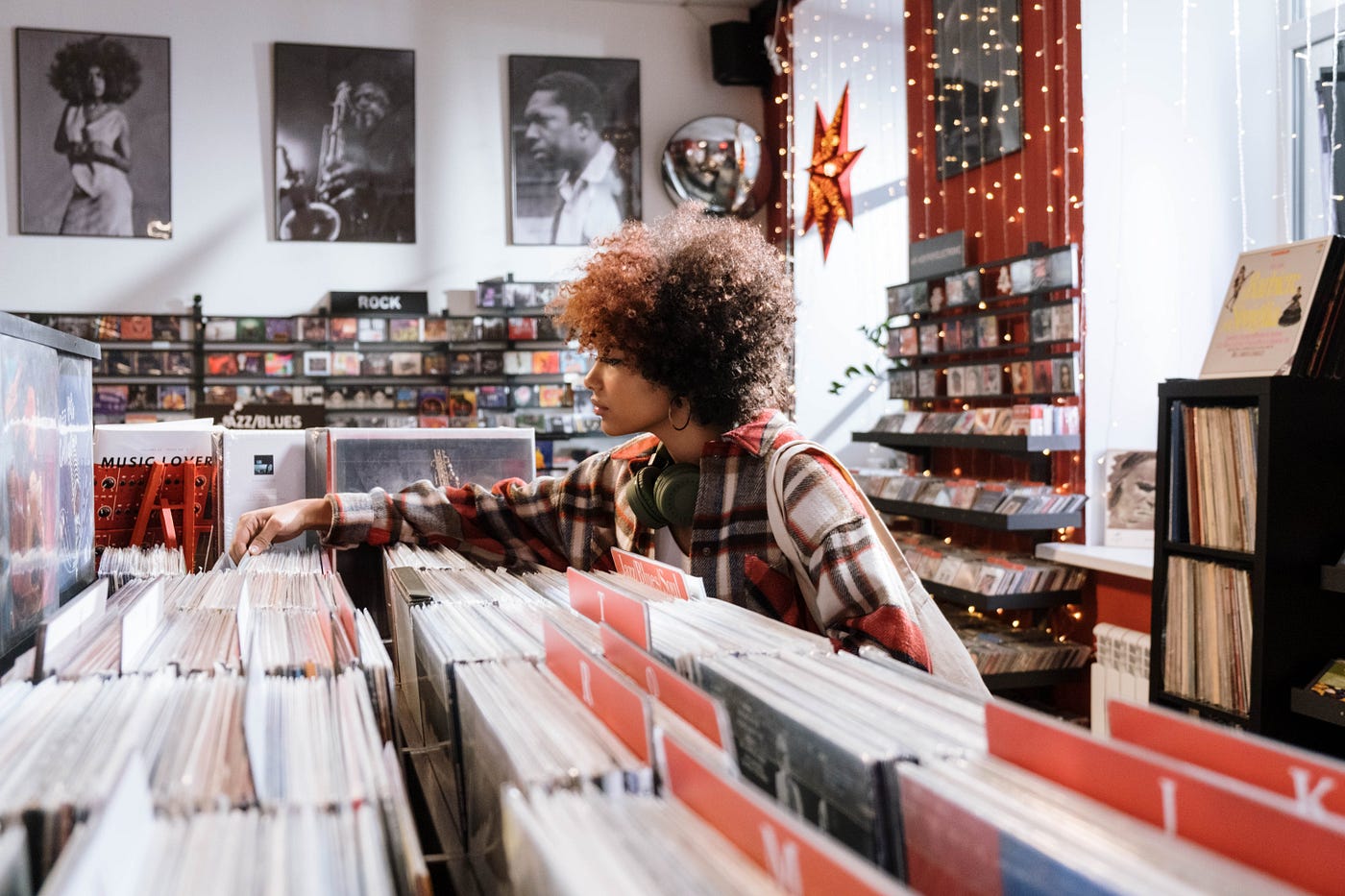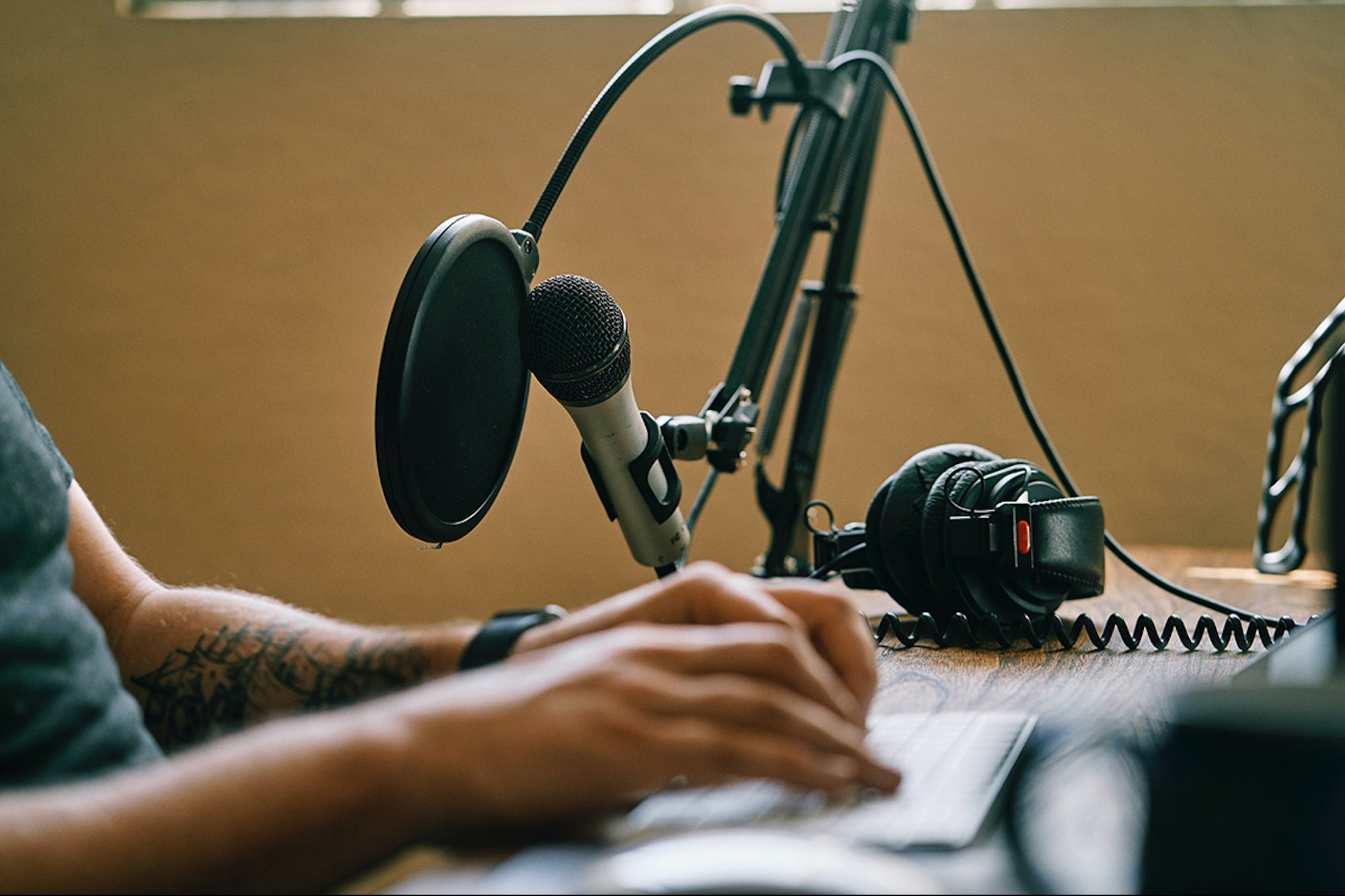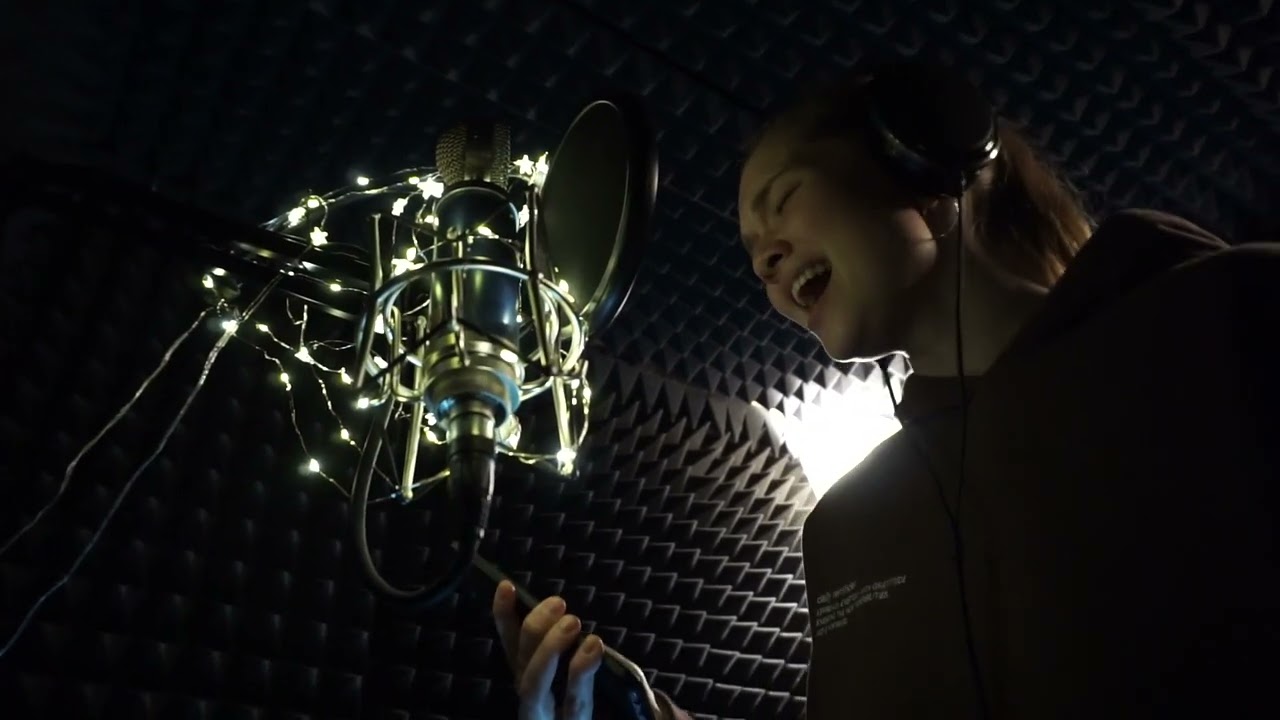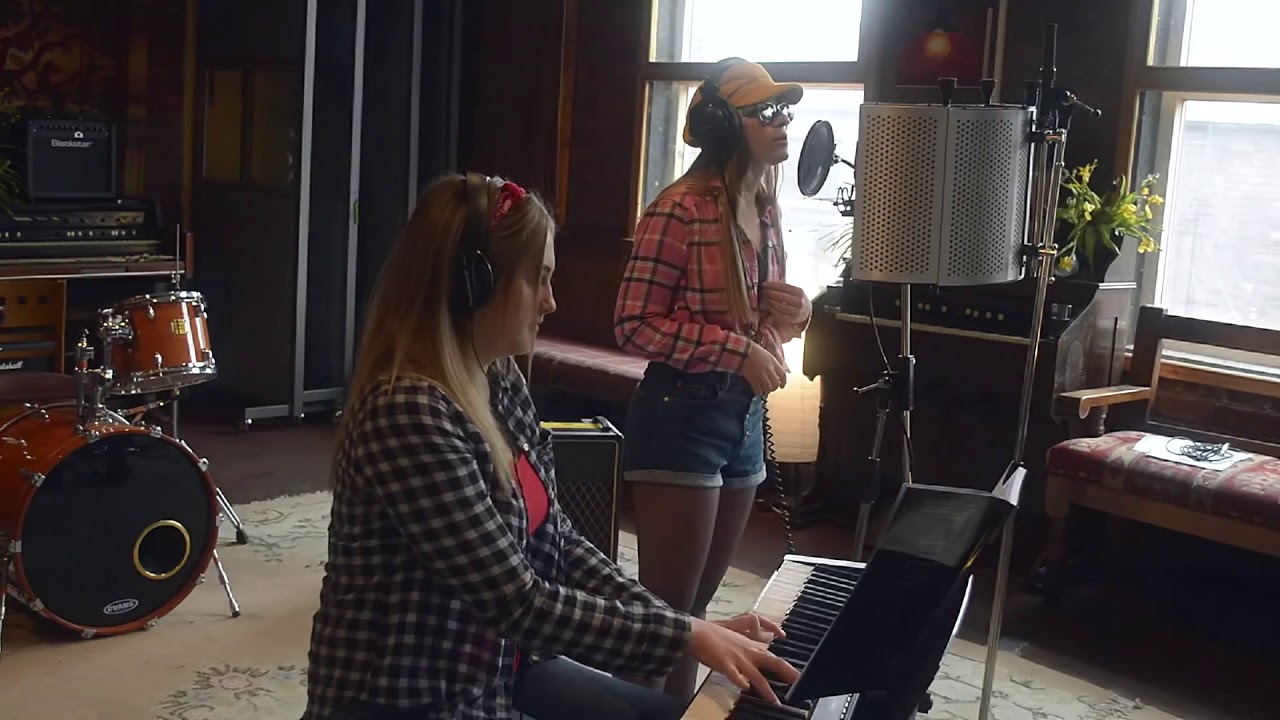Home>Production & Technology>Cover Song>How To Make Money Off A Cover Song


Cover Song
How To Make Money Off A Cover Song
Modified: January 22, 2024
Learn how to monetize your cover songs and start earning money from your musical talents. Discover the best strategies to make a profit off your cover song performances.
(Many of the links in this article redirect to a specific reviewed product. Your purchase of these products through affiliate links helps to generate commission for AudioLover.com, at no extra cost. Learn more)
Table of Contents
- Introduction
- Understanding Copyright Laws
- Obtaining Proper Licenses
- Choosing the Right Song to Cover
- Recording and Producing the Cover Song
- Promoting Your Cover Song
- Distributing and Selling Your Cover Song
- Monetizing Your Cover Song on Streaming Platforms
- Utilizing Social Media and Online Platforms
- Collaborating with Other Artists
- Conclusion
Introduction
Cover songs are a popular way for musicians to pay homage to their favorite artists and put their own unique spin on well-known tunes. With the rise of digital music platforms and the ease of sharing music online, cover songs have become a valuable asset for artists looking to gain exposure and even make some money. In this article, we will explore the world of cover songs and provide valuable insights on how to monetize your cover song endeavors.
While creating a cover song may seem like a straightforward process, there are important legal and licensing considerations that every artist must be aware of. Understanding and complying with copyright laws is crucial to avoid potential legal issues down the line. Obtaining the proper licenses and permissions is essential to ensure that you can legally release and monetize your cover song.
Choosing the right song to cover is another important aspect of making money off a cover song. While it’s tempting to cover a popular hit to attract a larger audience, it’s important to consider licensing restrictions and the potential competition from other artists. Finding a balance between familiarity and originality is key.
The quality of your recording and production can make or break the success of your cover song. Investing in professional equipment and seeking out experienced producers or engineers can significantly improve the overall sound and production value of your cover song. Remember, listeners have high expectations when it comes to cover songs, so it’s important to deliver a polished and captivating rendition.
Once you have recorded and produced your cover song, the next step is to promote it effectively. Utilizing social media, online platforms, and music streaming services can help you reach a wider audience and attract listeners. Engaging with your fans and encouraging them to share your cover song can also generate organic growth and exposure.
In this article, we will delve into the various methods of distributing and selling your cover song, including digital distribution platforms, online music stores, and physical copies. Furthermore, we will explore ways to monetize your cover song on streaming platforms through royalties, licensing opportunities, and digital marketing strategies.
Finally, we will discuss the power of collaboration in the world of cover songs. By collaborating with other artists, you can tap into their existing fan base and create unique musical collaborations that will capture the attention of listeners. Building a network of talented musicians can open doors to new opportunities and expand your reach in the music industry.
Whether you’re a solo artist, part of a band, or an aspiring musician looking to make a mark in the world of music, understanding how to make money off a cover song can be a game-changer. By following the strategies and insights provided in this article, you’ll be well on your way to monetizing your cover songs and achieving success in the competitive music industry.
Understanding Copyright Laws
Before diving into the world of cover songs and monetization, it’s essential to have a solid understanding of copyright laws. Copyright is a legal protection granted to the original creator of a work, whether it’s a song, book, or artwork. As a cover artist, it’s important to respect and adhere to these laws to avoid facing legal consequences.
Under copyright laws, the right to reproduce, distribute, perform, and display a copyrighted work belongs solely to the original copyright owner. This means that if you want to create a cover version of a copyrighted song, you must obtain the necessary permissions and licenses.
One popular type of license that allows artists to record and distribute cover songs is called a mechanical license. Mechanical licenses grant the right to reproduce and distribute a copyrighted song. These licenses are typically obtained either directly from the copyright owner or through a mechanical licensing agency, such as The Harry Fox Agency in the United States.
It’s important to note that not all songs are eligible for mechanical licenses. Some songs may be classified as “controlled compositions,” which means that the original copyright owner can set specific restrictions or negotiate individual licensing terms. As a cover artist, it’s crucial to research the copyright status of the song you intend to cover to determine if a mechanical license is necessary and what specific limitations or requirements may apply.
In addition to mechanical licenses, you may also need to obtain synchronization licenses if you plan to use the cover song in a visual medium, such as a music video, film, or commercial. Synchronization licenses grant permission to synchronize the copyrighted song with visual content. These licenses are typically obtained directly from the copyright owner or through a synchronization licensing agency.
Understanding the limitations and restrictions of copyright laws is vital to protect yourself as a cover artist. It’s essential to do thorough research, consult legal professionals if needed, and ensure that you have obtained all necessary licenses and permissions before releasing and monetizing your cover song.
By respecting copyright laws and obtaining proper licenses, you can enjoy the creative freedom of covering your favorite songs while also protecting the rights of the original copyright owners. This knowledge will give you the confidence to move forward in your cover song journey and explore the various avenues of monetization.
Obtaining Proper Licenses
When it comes to cover songs, obtaining the proper licenses is crucial to ensure that you have the legal right to release and monetize your rendition. The two main licenses you will need to obtain are mechanical licenses and synchronization licenses.
A mechanical license is required when you want to reproduce and distribute a cover version of a copyrighted song. This license allows you to record your own interpretation of the song and release it to the public. Mechanical licenses can be obtained directly from the copyright owner or through a mechanical licensing agency.
In the United States, the Harry Fox Agency is the primary provider of mechanical licenses. They offer a streamlined process for obtaining licenses, making it easier for cover artists to secure the necessary permissions. By visiting their website, you can search for the song you want to cover and apply for a mechanical license online.
It’s important to note that the cost of mechanical licenses can vary depending on factors such as the popularity of the original song and the number of units you plan to distribute. The Harry Fox Agency has a fee schedule in place that provides a rough estimation of these costs, allowing you to budget accordingly.
In addition to mechanical licenses, you may also need to obtain synchronization licenses if you plan to use your cover song in a visual medium. Synchronization licenses grant you the right to synchronize your cover song with visual content, such as music videos, films, or commercials.
Sync licenses can be more complex to navigate, as they typically involve negotiating directly with the copyright owner or their representatives. If you intend to use your cover song in a visual project, it’s advisable to consult with a licensing agency or legal professional who specializes in synchronization licensing to ensure that you secure the appropriate permissions and adhere to any specific terms or requirements.
Keep in mind that obtaining licenses can take time, so it’s important to plan ahead and start the process well in advance of your desired release date. This will allow for any necessary negotiations, paperwork, and payments to be completed without delaying your project.
By obtaining the proper licenses, you can have peace of mind knowing that you are operating within the legal framework and have the rights to monetize your cover song. Remember, it’s always better to be proactive and ensure that all necessary licenses are secured rather than risking potential copyright infringement claims that can result in legal consequences and damage your reputation as an artist.
Choosing the Right Song to Cover
When it comes to making money off a cover song, choosing the right song is crucial. While it may be tempting to cover a popular hit or a well-known classic, it’s important to consider a few factors before making your decision.
First and foremost, it’s essential to ensure that the song you want to cover is in the public domain or that you have obtained the necessary licenses and permissions to legally release your cover version. Remember, copyright laws protect the original song, and unauthorized use can lead to legal issues.
Once you have determined the legality of covering a particular song, consider the popularity and demand for the song. While covering a popular hit may seem like a surefire way to attract listeners and potentially generate revenue, it’s important to keep in mind that there may be significant competition from other artists covering the same song.
Choosing a lesser-known or niche song can help your cover stand out and carve a unique space for your rendition. This can attract a dedicated fanbase who appreciate your take on an underrepresented song.
Another aspect to consider is your own musical style and vocal range. It’s important to choose a song that suits your voice and allows you to showcase your own artistic identity. Adding your own twist and interpretation to a song can make it more engaging and memorable for listeners.
Furthermore, think about the audience you want to target with your cover. Consider the demographic and preferences of your target audience and choose a song that resonates with them. This can help you build a loyal fanbase and increase the chances of your cover song generating success.
Lastly, it’s important to consider your own personal connection and passion for the song you choose to cover. When you genuinely connect with a song and feel inspired by it, your enthusiasm and authenticity will shine through in your performance. This emotional connection can help create a deeper impact on listeners and draw them in.
Remember, choosing the right song to cover is a strategic decision that requires careful consideration. By taking into account factors such as legality, popularity, your own style and range, target audience, and personal connection, you can select a cover song that sets you apart from others and maximizes your chances of success.
Recording and Producing the Cover Song
Recording and producing your cover song with high-quality standards is essential to captivate listeners and increase your chances of making money from your efforts. Here are some key steps to consider when recording and producing your cover song:
1. Select a Recording Environment: Choose a suitable space for recording that provides good acoustics and minimizes background noise. Setting up a dedicated home studio or booking a professional recording studio are both viable options, depending on your budget and resources.
2. Invest in Quality Equipment: While professional recording studios have top-notch gear, you can achieve great results with a modest home setup. Invest in a quality microphone, audio interface, headphones, and a digital audio workstation (DAW) software for recording and editing.
3. Preparation and Rehearsal: Before hitting the record button, ensure that you are well-rehearsed and familiar with the song. Practice your vocals, instrumentation, and any harmonies or melodic variations you plan to incorporate, to deliver a confident and polished performance.
4. Tracking Instruments and Vocals: Begin by recording the rhythm section, such as drums, bass, and any other instrumental parts. Then, layer additional instrumental tracks, meticulously playing each part to perfection. Finally, record the lead and background vocals separately for optimal control and clarity.
5. Edit and Arrange: Use your chosen DAW to edit and arrange the recorded tracks. Trim any unwanted sections, align the timing of different tracks, and adjust the volume levels to create a cohesive and balanced mix. Experiment with different arrangements to add your unique touch to the cover song.
6. Mixing: Mixing is the process of blending all the individual tracks together to create a final, polished sound. Balance the volumes, pan instruments for spatialization, apply equalization, compression, and other effects to enhance the overall quality and impact of the cover song.
7. Mastering: The mastering stage is crucial for adding the final touches and ensuring that your cover song is ready for distribution. Mastering involves adjusting the overall dynamics, EQ, and stereo enhancement to achieve a consistent and professional sound across different playback systems.
8. Quality Control: Take the time to critically listen to your cover song and make any necessary adjustments. Address any audio artifacts, clicks, or pops, and ensure that the mix translates well on different devices and audio platforms.
9. Consider Professional Help: If you lack experience or technical knowledge, consider hiring a professional mixing and mastering engineer. Their expertise can elevate the quality of your cover song and give it a competitive edge in the market.
By following these steps and paying attention to detail during the recording and production process, you’ll be able to create a high-quality cover song that showcases your talent and increases your chances of monetization.
Promoting Your Cover Song
Once you’ve recorded and produced your cover song, the next crucial step is to effectively promote it to reach a wider audience. Here are some key strategies to consider when promoting your cover song:
1. Utilize Social Media: Leverage the power of social media platforms such as Facebook, Instagram, Twitter, and YouTube to connect with your audience. Create engaging posts, share behind-the-scenes footage, teasers, and even live performances of your cover song to generate excitement and encourage sharing.
2. Create a Compelling Music Video: People love visual content. Consider creating a captivating music video to accompany your cover song. A well-produced and visually appealing video can significantly enhance the promotion and popularity of your cover.
3. Engage with Fans: Interact with your fans and followers by responding to comments, messages, and sharing user-generated content related to your cover song. Building a strong and engaged community around your music can help generate buzz and word-of-mouth promotion.
4. Collaborate with Influencers: Collaborating with influencers or content creators in your niche can help expose your cover song to their existing fan base. Reach out to popular influencers or musicians who share a similar style or audience and explore collaboration opportunities such as cover song duets or joint performances.
5. Pitch to Blogs and Online Magazines: Research and reach out to music blogs, online magazines, and relevant media outlets to feature your cover song. Pitch your story, explain your unique take on the song, and provide links to your cover and accompanying content. Positive reviews and features can significantly increase visibility and attract new listeners.
6. Utilize Streaming Platforms: Upload your cover song to major streaming platforms such as Spotify, Apple Music, and Amazon Music. Optimize your metadata, including tags, descriptions, and cover art to increase discoverability. Encourage your fans to add your cover song to their playlists and share it with others, as these platforms often rely on algorithms and user engagement to promote new music.
7. Collaborate with Other Artists: Partnering with other artists, whether established or up-and-coming, can help expand your reach and introduce your cover song to new audiences. Consider collaborating on joint covers, remixes, or even live performances to cross-promote each other’s music.
8. Create a Dedicated Website or Landing Page: Establish an online presence with a dedicated website or landing page for your cover song. Include information about yourself, the story behind the cover, links to streaming platforms, and any available merchandise or exclusive content to engage and convert curious visitors into fans.
9. Run Paid Advertising Campaigns: Consider investing in targeted online advertising to boost the visibility of your cover song. Platforms like Facebook Ads, Instagram Ads, and YouTube Ads allow you to precisely target your desired audience based on demographics, interests, and behavior.
Remember, promoting your cover song requires consistent effort and a multifaceted approach. Experiment with different strategies, analyze your results, and adjust your tactics accordingly. Building a solid foundation and engaging with your audience can unlock opportunities for organic growth, increased streams, and potential monetization of your cover song.
Distributing and Selling Your Cover Song
Once you have recorded and promoted your cover song, it’s time to distribute and sell it to generate revenue. Here are some key steps to consider when distributing and selling your cover song:
1. Choose Distribution Platforms: Decide on the platforms where you want to distribute your cover song. Popular options include digital music stores like iTunes, Amazon Music, and Google Play Music, as well as streaming platforms like Spotify, Apple Music, and Deezer. You can opt for a combination of both to maximize your reach.
2. Sign Up with a Digital Distributor: To get your cover song on major digital platforms, sign up with a reputable digital distribution service. These platforms act as intermediaries, responsible for delivering your music to various online stores and streaming platforms. Examples include TuneCore, CD Baby, DistroKid, and Ditto Music.
3. Prepare Cover Art and Metadata: Create eye-catching cover art that accurately represents your cover song. Additionally, ensure that your song’s metadata, including tags, genre, and artist information, is accurate and optimized to increase discoverability on digital platforms.
4. Set a Release Date: Choose a release date for your cover song. Consider timing it strategically to coincide with specific events, holidays, or popular trends to generate more interest and maximize the chances of getting noticed amidst the vast amount of music being released.
5. Secure Licensing and Royalties: Ensure that you have secured the necessary licenses for your cover song and understand the royalty distribution process. Mechanical licenses and performance royalties, collected by performance rights organizations like ASCAP, BMI, or SESAC, are important considerations to receive proper compensation for your cover.
6. Promote Sales on Your Website or Landing Page: If you have a dedicated website or landing page, offer direct sales of your cover song through digital downloads or physical copies. This allows you to retain a larger percentage of the revenue compared to streaming platforms and provides another avenue for your fans to support your music.
7. Create Merchandise: Explore the option of creating merchandise to complement your cover song. This can include items such as t-shirts, posters, or exclusive limited-edition releases. Selling merchandise alongside your cover song can be an effective way to increase revenue and boost your branding.
8. Consider Physical Distribution: Depending on your target audience, consider producing physical copies of your cover song, such as CDs or vinyl records. This can be an appealing option for collectors, fans who prefer tangible music, or for selling at live performances and events.
9. Monitor Sales and Analytics: Regularly monitor your sales and streaming data to gain insights into your audience, popular platforms, and regions where your cover song is performing well. This information can help you tailor your marketing efforts and future releases to maximize your revenue potential.
Remember, distributing and selling your cover song requires a combination of digital platforms, licensing knowledge, and strategic marketing. Keep in mind the various revenue streams available, both from sales and streams, and explore opportunities to sell directly through your website or with merchandise offerings. With careful planning and effective implementation, you can monetize your cover song and increase your earnings as an artist.
Monetizing Your Cover Song on Streaming Platforms
Streaming platforms have become a dominant force in the music industry, and they offer excellent opportunities for cover song monetization. Here are some key strategies to consider when monetizing your cover song on streaming platforms:
1. Register with a Performance Rights Organization (PRO): Sign up with a performance rights organization such as ASCAP, BMI, or SESAC. These organizations collect performance royalties for public performances of your cover song and ensure that you receive proper compensation when your song is streamed.
2. Register Your Cover Song With the Appropriate Parties: Make sure that you have properly registered your cover song, including the original songwriters, with the necessary agencies or databases. This ensures that the royalties generated from your cover song are distributed correctly.
3. Optimize Metadata and Tags: When uploading your cover song to streaming platforms, optimize your metadata and tags to increase discoverability. Use relevant and accurate keywords in your song title, artist name, and description to make it easier for listeners to find your cover when searching for the original song.
4. Promote Your Cover Song on Streaming Playlists: Create and collaborate with playlist curators who include cover songs in their playlists. Getting your cover song featured on popular playlists can significantly increase its exposure and attract more streams and followers.
5. Consider Pre-Saving and Pre-Adding Campaigns: Prior to the release, encourage your fans to pre-save or pre-add your cover song on streaming platforms. This allows them to add the song to their library or playlist ahead of the release date, generating immediate streaming activity upon release and potentially boosting the song’s performance on algorithm-based playlists.
6. Engage with Your Listeners: Interact with listeners who are streaming your cover song. Respond to comments, messages, and engage in discussions on social media and streaming platforms. Building a loyal and engaged fanbase can lead to increased streams and potential support on other platforms.
7. Utilize Data and Analytics: Regularly review your streaming platform analytics to gain insights into listener demographics, geographic locations, and popular playlists where your cover song is being streamed. Use this information to tailor your marketing efforts and identify opportunities for growth.
8. Explore Collaborative Playlists: Collaborate with other artists or influencers to create collaborative playlists featuring cover songs. This cross-promotion can help introduce your cover song to new audiences and expand your reach on streaming platforms.
9. Understand Royalty Distribution: Familiarize yourself with the royalty distribution process on streaming platforms. While the revenue from individual streams may seem minimal, the collective streams over time can add up. Keep track of your streams and understand the payout structure to ensure you are fairly compensated for your cover song.
Remember, monetizing your cover song on streaming platforms requires a strategic approach to optimize its visibility and maximize revenue. By registering with a performance rights organization, promoting your cover song on playlists, engaging with listeners, and utilizing data and analytics, you can tap into the vast audience of streaming platforms and generate income from your cover song.
Utilizing Social Media and Online Platforms
In the digital age, social media and online platforms have become indispensable tools for musicians to reach and engage with their audience. Here are key strategies to effectively utilize social media and online platforms to promote your cover song:
1. Create a Strong Social Media Presence: Establish profiles on popular social media platforms such as Facebook, Instagram, Twitter, and YouTube. Optimize your profiles with relevant information and high-quality visuals that reflect your cover song and personal brand.
2. Consistent and Engaging Content: Regularly post engaging content related to your cover song. This can include behind-the-scenes footage, acoustic performances, teasers, lyric videos, and updates on upcoming releases or live performances. Engage with your followers by responding to comments and messages to cultivate a dedicated fanbase.
3. Leverage Live Streaming: Utilize live streaming features on platforms like Facebook Live, Instagram Live, or YouTube Live to connect with your audience in real-time. Consider performing live versions of your cover song, hosting Q&A sessions, or collaborating with other artists to keep your fans engaged and excited.
4. Create Engaging Videos: Video content is highly engaging and shareable. Create visually appealing music videos, lyric videos, or even creative covers to accompany your cover song. Post them on platforms like YouTube and Vimeo and promote them on social media to attract more viewers and listeners.
5. Engage with Online Communities and Forums: Seek out online communities and forums related to cover songs, music, and your genre. Contribute to discussions, share your cover song, and provide valuable insights. Building a presence within these communities can lead to new fans and potential collaborations.
6. Cross-Promote with Other Artists: Collaborate and cross-promote with fellow musicians or artists who share a similar style or audience. This can involve covering each other’s songs, featuring on each other’s platforms, or engaging in joint promotional activities. By leveraging and combining audiences, you can increase your exposure and reach.
7. Participate in Online Challenges and Trends: Stay on top of the latest challenges, trends, and viral movements on social media. Participate in cover song challenges, utilize trending hashtags, or create your own unique challenge to capture attention and engage with a wider audience.
8. Utilize Paid Advertising: Allocate a budget for targeted online advertising on platforms like Facebook Ads, Instagram Ads, or YouTube Ads. This allows you to reach a wider audience that may not be familiar with your cover song. Set specific targeting parameters based on demographics, interests, and behavior to maximize the effectiveness of your ad campaigns.
9. Utilize Influencer Marketing: Collaborate with social media influencers or content creators in your niche. Partner with them to promote your cover song through sponsored posts, mentions, or featured content on their platforms. Their influence and established audience can introduce your music to new listeners and potentially increase your following.
Remember, social media and online platforms offer a vast and accessible landscape for promoting your cover song. By consistently creating engaging content, leveraging live streaming, collaborating with other artists, and utilizing paid advertising when necessary, you can effectively connect with your audience, expand your reach, and increase the visibility of your cover song.
Collaborating with Other Artists
Collaborating with other artists is an effective way to expand your reach, tap into new audiences, and create unique musical experiences. Here are some key strategies to consider when collaborating with other artists:
1. Find Artists with Complementary Styles: Look for artists whose musical style complements your own. Consider their genre, sound, and target audience. Collaborating with artists who bring a different perspective or skill set can result in a fresh and exciting take on your cover song.
2. Network and Attend Events: Attend music events, conferences, or open mic nights to meet other artists. Networking and building connections within the music community can lead to potential collaboration opportunities. Don’t be afraid to strike up conversations and explore shared interests.
3. Collab Vlogs and YouTube Covers: Create collaborative vlogs or YouTube cover videos with other artists. This cross-promotion exposes your individual fanbases to each other’s music and can attract new listeners to both of your cover songs.
4. Online Collaborations: Connect with artists online through platforms like SoundCloud, social media groups, or online music communities. Share your cover song projects, reach out to artists you admire, and propose collaborative ideas. Virtual collaborations are a convenient way to work with artists from different locations.
5. Joint Live Performances: Arrange joint live performances where you can perform cover songs together. This can be done in various settings, such as local venues, virtual concerts, or even live streaming platforms. Collaborative performances provide a unique and engaging experience for your audience.
6. Shared Releases and EPs: Consider releasing collaborative albums, EPs, or singles with other artists. This allows you to combine your fanbases and showcase your individual talents and cover songs through joint projects. Sharing the workload and resources can also help reduce the overall costs of production and promotion.
7. Feature on Each Other’s Platforms: Cross-promote your cover songs by featuring on each other’s platforms. This can involve guest vocals, guest instrumentals, or even remixes. This exposure to each other’s audiences can lead to new fans and increased streams for both of your cover songs.
8. Collaborative Marketing and Promotion: Work together with other artists to market and promote your collaborative cover songs. Create joint marketing campaigns, share each other’s social media posts, and collaborate on promotional content. By pooling resources, you can reach a wider audience and generate more interest in your cover songs.
9. Support and Maintain Relationships: Collaborations are not just about a single project; they can lead to long-lasting relationships in the music industry. Support and promote your collaborators’ music even after your collaboration is released. Stay connected and consider future opportunities for collaboration.
Remember, collaborating with other artists can bring new perspectives, widen your audience, and create exciting musical experiences. Be open to different ideas, communicate effectively, and value the contributions of your collaborators. By leveraging the strengths of each artist involved, you can create memorable cover songs that resonate with a larger audience.
Conclusion
Cover songs present a wealth of opportunities for musicians to express their creativity, connect with audiences, and even monetize their efforts. Through this comprehensive guide, you have gained insights into the various aspects of making money off cover songs.
Understanding copyright laws and obtaining the necessary licenses and permissions are fundamental to ensuring a legal and hassle-free cover song journey. By respecting copyright and securing the proper licenses, you can release your cover songs with confidence and peace of mind.
Choosing the right song to cover is a strategic decision that requires careful consideration. Balancing familiarity, originality, and personal connection will help you stand out in a sea of cover songs and attract the attention of listeners.
The process of recording and producing a high-quality cover song is vital in making a lasting impression on listeners. By investing in quality equipment, preparing thoroughly, and paying attention to detail during the recording and production process, you can create a polished rendition that captivates your audience.
Promoting your cover song through social media, online platforms, and targeted marketing strategies is essential for gaining visibility and reaching a wider audience. Engaging with your fans, collaborating with influencers or other artists, and leveraging the power of streaming platforms will maximize your cover song’s potential for success.
Distributing and selling your cover song through digital platforms, physical copies, and merchandise allows you to monetize your efforts. By understanding the royalty distribution process, utilizing data analytics, and embracing direct sales opportunities, you can generate revenue and support your artistic career.
Lastly, collaborating with other artists can amplify your reach, inspire creativity, and introduce you to new audiences. By embracing collaboration as a means of growth and artistic exploration, you can create memorable and unique cover songs that resonate in the hearts of listeners.
As you embark on your cover song journey, remember that success takes time, effort, and continuous adaptation. Embrace creativity, stay connected with your audience, and never stop exploring new avenues for growth.
Now armed with the knowledge and strategies outlined in this guide, you are well-equipped to navigate the world of cover songs and make the most of your musical endeavors. So, go forth, unleash your creativity, and make money off your cover songs while captivating the world with your unique interpretations.

